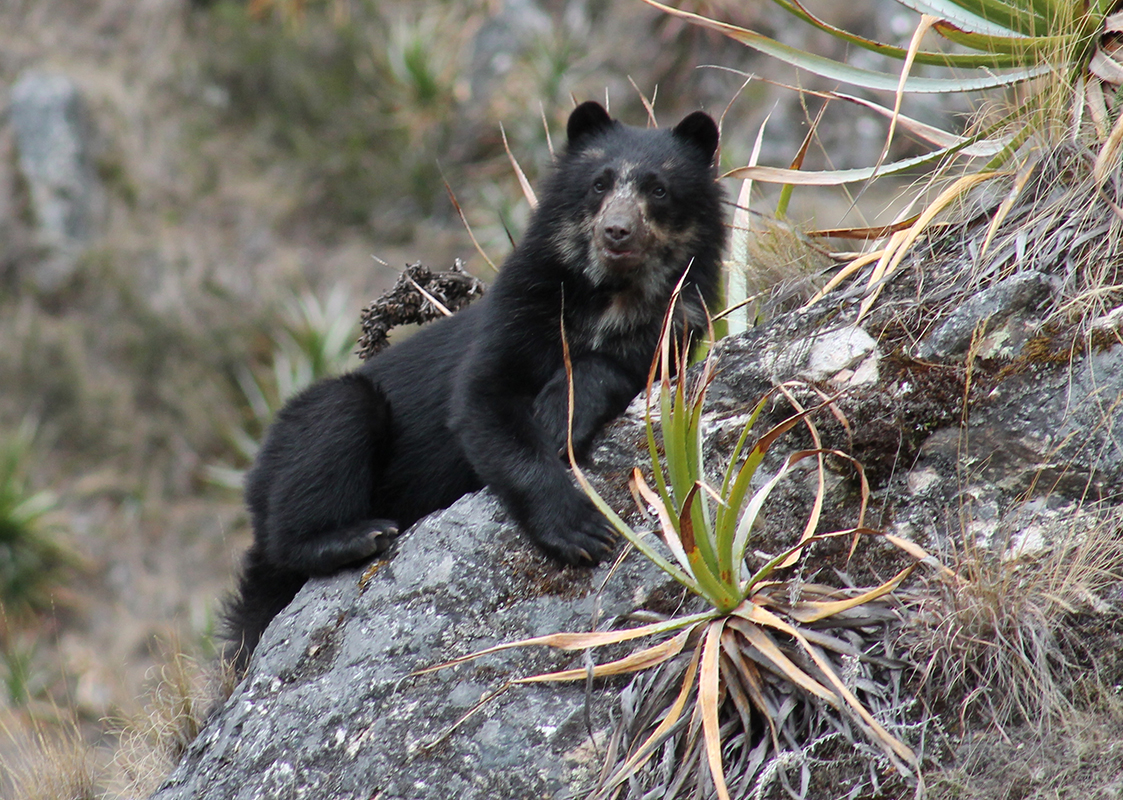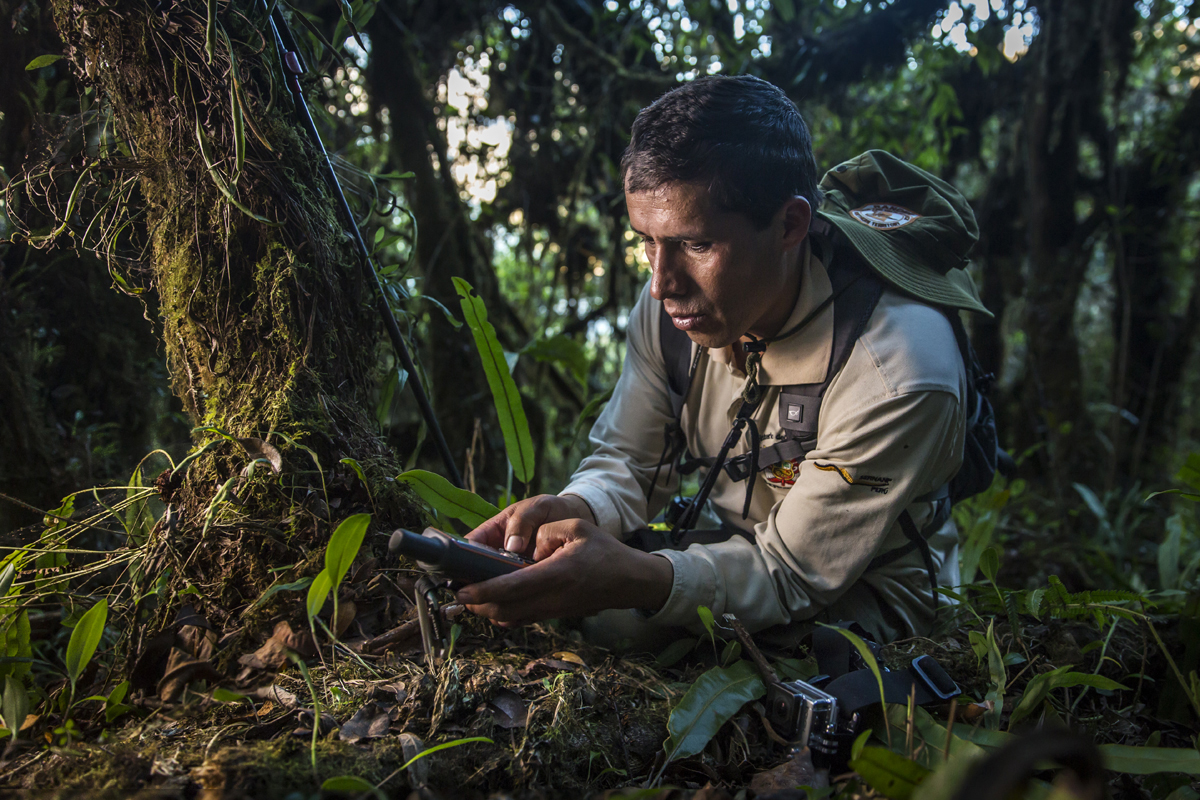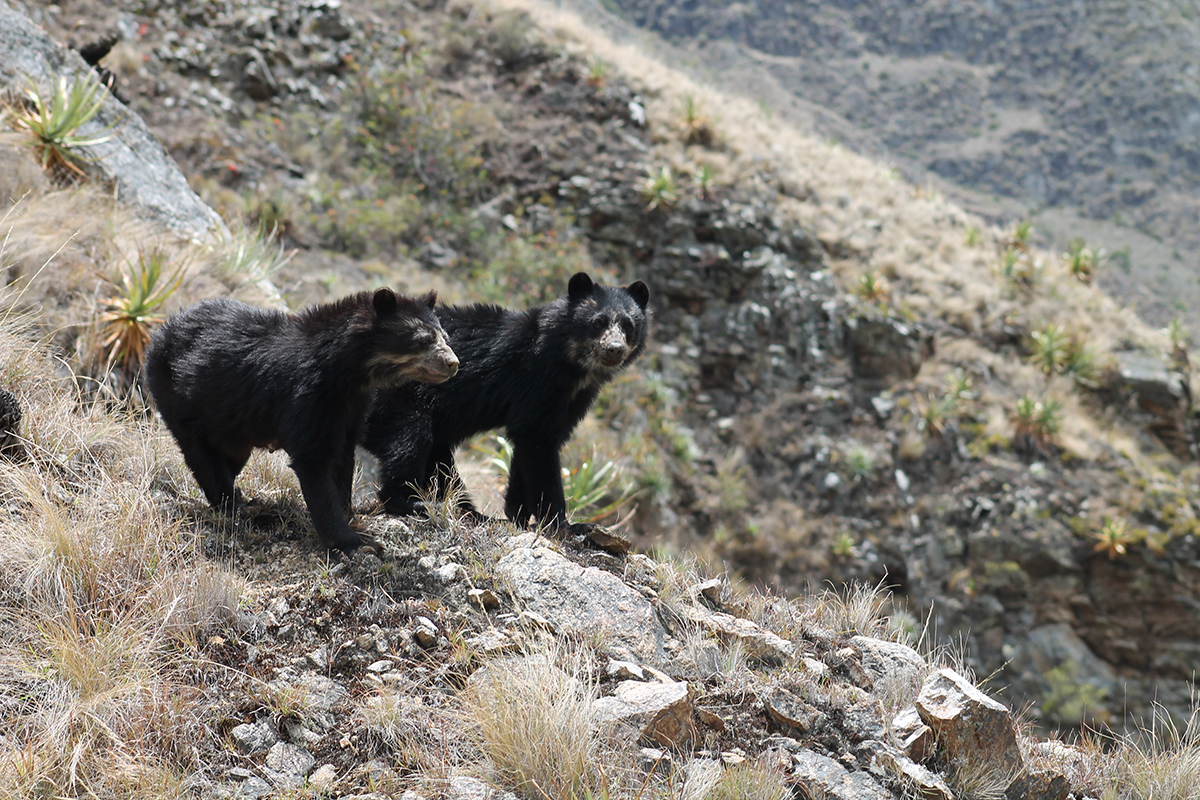Bear Necessities: Andean Bears Call Machu Picchu Home

Machu Picchu, the site of historic Incan ruins and a popular destination for tourists, is also a favorite destination for South America's only native bear species — the Andean bear.
In a recent survey of the Historic Sanctuary of Machu Picchu, park officials and conservationists found signs of Andean bears (Tremarctos ornatus) in most of the Peruvian site, revealing that the bears are more widespread and more established in the famous Incan ruins than was previously suspected, representatives from the Wildlife Conservation Society (WCS) announced Jan. 26 in a statement.
Machu Picchu is registered as a World Heritage Site by the United Nations Educational, Scientific and Cultural Organization (UNESCO), and is one of only 35 sites recognized for both cultural and natural significance. The survey's findings will help officials better preserve the bears' habitat as researchers continue to investigate the Andean bears' lifestyle and habits, about which little is known. [Andean Bears Are Right at Home in Machu Picchu | Video]
Sometimes referred to as spectacled bears due to pale yellow or white markings around their eyes, Andean bears are omnivores that measure up to 6.6 feet (2 meters) in length and can weigh as much as 400 pounds (181 kilograms). They live in the forests and grasslands of the Andes Mountains, ranging from Venezuela to Bolivia.

For the Machu Picchu survey, the WCS partnered with the Peruvian federal agency Servicio Nacional de Áreas Naturales Protegidas por el Estado (SERNANP). From August 2014 to September 2015, 30 park officials and researchers investigated rainforest and grassland habitats, searching for evidence of Andean bears — scat, footprints and feeding signs.
They found evidence in abundance — traces of Andean bears appeared in more than 95 percent of an area of Machu Picchu measuring 142 square miles (368 square kilometers), according to the WCS.
Machu Picchu draws over 2,500 human visitors daily, the Peruvian Times reported in 2014, but interactions between bears and people remain rare. Though Andean bears are active during the daytime, they are shy and avoid contact with humans, according to the World Wildlife Fund for Nature.
Sign up for the Live Science daily newsletter now
Get the world’s most fascinating discoveries delivered straight to your inbox.
Video footage captured in 2016 shows a young Andean bear climbing over the ruins at the site in close proximity to tourists, but this was under highly unusual circumstances, officials told Peruvian news station Canal N. The bear had been startled by a Peruvian helicopter circling overhead, which violated the area's no-fly zone, Fertur Peruvian Travel Blog reported.

The survey also determined that the Machu Picchu bears are part of a larger group of Andean bears that intermingle via grassland "corridors" — natural connections between separated habitats — that occur at elevations of more than 11,000 feet (3,400 meters) above sea level.
"It is amazing that this world famous location is also [an] important habitat for Andean bears," Isaac Goldstein, coordinator of WCS's Andean Bear Program, said in a statement. "The results of the survey will help us to understand the needs of this species and how to manage Andean bears in this location."
Original article on Live Science.

Mindy Weisberger is an editor at Scholastic and a former Live Science channel editor and senior writer. She has reported on general science, covering climate change, paleontology, biology and space. Mindy studied film at Columbia University; prior to Live Science she produced, wrote and directed media for the American Museum of Natural History in New York City. Her videos about dinosaurs, astrophysics, biodiversity and evolution appear in museums and science centers worldwide, earning awards such as the CINE Golden Eagle and the Communicator Award of Excellence. Her writing has also appeared in Scientific American, The Washington Post and How It Works Magazine. Her book "Rise of the Zombie Bugs: The Surprising Science of Parasitic Mind Control" will be published in spring 2025 by Johns Hopkins University Press.









